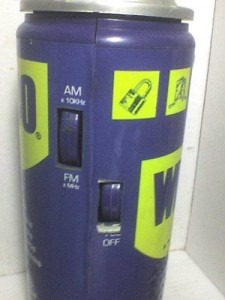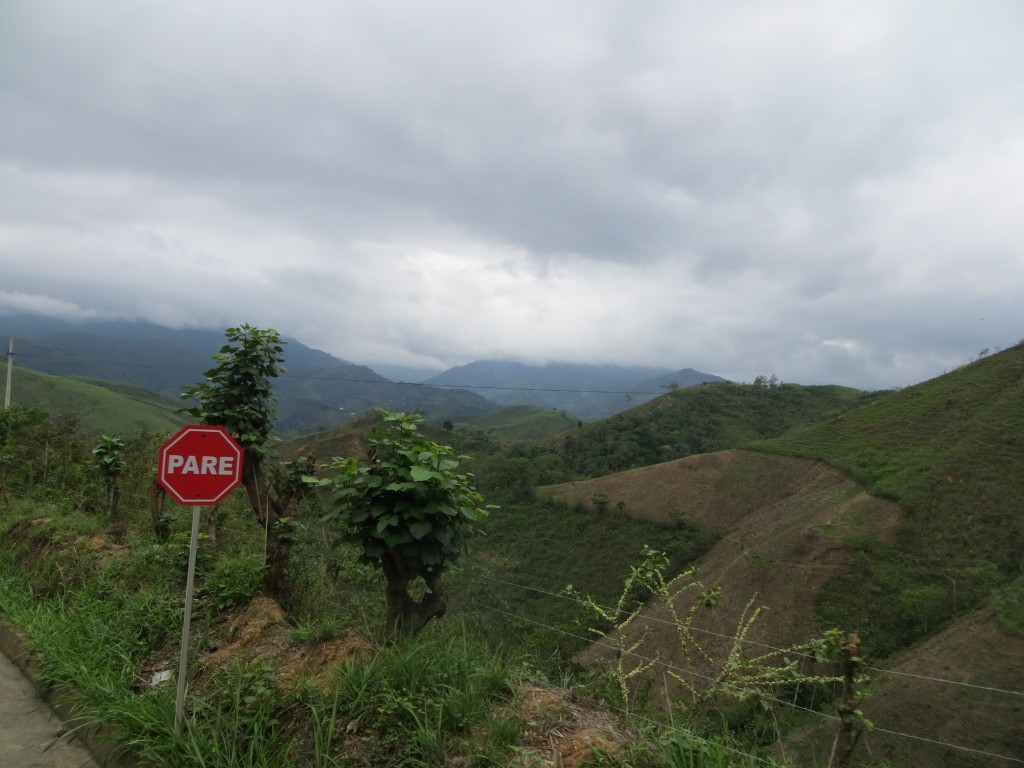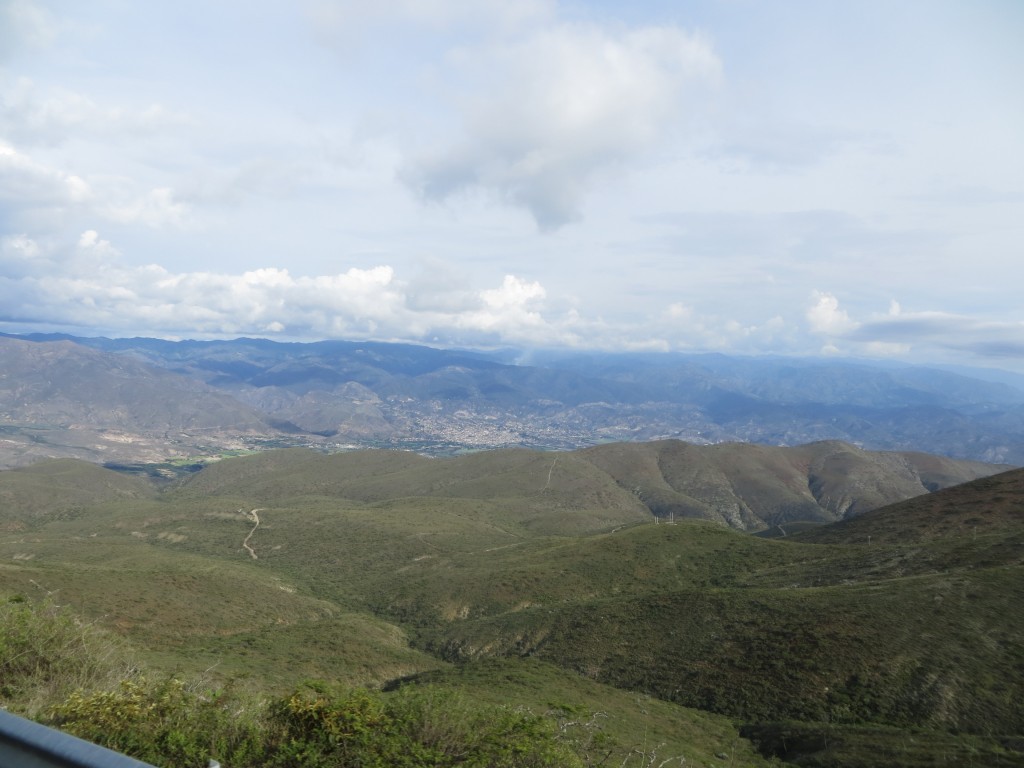The Ride from Guayaquil to Loja
January 23, 2014
The older man with a fat nose and a round, jovial face rushed forward into the vacant seat behind us. He had been near the back of the bus since we left Guayaquil several hours earlier. He dropped something as the bus lurched forward. I reached down to see if I could pick up his item and hand it back to him, but he had already recovered his can of WD-40, which he held up to show me with an “I-have-a-trick-up-my-sleeve” grin on his face. I did a double-take. The can had a little switch and a pattern of little holes punched into the side. “¿Es una radio?” I asked.

“Perú,” he said, smiling happily, waving the can and then briefly flipping on the switch so we could hear it.
“Where are you headed today?” I asked him.
“Loja.” He counted out the hours left to go on his hand. “We still have five hours to go,” he said. “It’s very far. Do you like long trips?”
I told him that we loved to travel and we were enjoying the scenery very much.
“Are you from Loja?” I asked.
“No!” he said, shuddering. “Loja is boring, and too cold. I’m from Guayaquil. I’m a reporter for a newspaper in Guayaquil and going to Loja to take a survey of political opinions for a story I’m writing. My newspaper is the one most hated by the President,” he said, lifting his chin a degree or two higher with a smug expression on his face. His chest swelled a bit.
He pulled out a copy of his paper and flipped to a story a few pages in and pointed to the headline. “They’re letting Chinese into Ecuador without visas. The president is making deals with China, Russia, Cuba, Venezuela…communists. They are all the devil!” he said, laughing wryly, then wrinkled his fat nose as we passed through a really smelly area.
“Pollos,” he said. (Chickens.) “There are hundreds of chicken farms in this area. Each chick is worth 2 dollars, and they have millions. They grow them fast and export the meat to other countries. It is horrible chicken.” He pointed out the window at all the chicken farms dotting the steep Andean landscape. “Pollos, pollos, pollos, pollos, pollos, pollos, pollos, pollos…” he said, pointing to one farm after another. “Pretty soon we will come into Balsas; that is where the owners of all the chicken farms live.”
Sure enough, a few minutes later the bus drove into Balsas and we pulled into a restaurant parking lot for our meal stop. “No!” our opinionated friend whined. “All they have here is pale, bad chicken. I hate this restaurant!” Luckily Keith and I were able to find some vegetarian potato soup, which they served to us in gigantic bowls for $1.50 each.
Our bus trip took us through thick clouds high in the Andes mountains, around steep curves that dropped away into the white fog and we could only guess how far down the valley was.

Hours later we rounded a corner and popped out into a dryer climate, leaving the fog behind and exchanging the lush jungle vegetation for agave plants and prickly pear cactus. Down below we could see the city of Catamayo, where we dropped off several passengers, including our round-faced friend with WD-40 can. He smiled his big smile, grabbed his briefcase, and waved goodbye.

Descending into Catamayo.
We went over one last foggy mountain pass from the desert into a lusher valley to reach the city of Loja (at just under 7,000 feet elevation) a few minutes before dark. The 9-hour ride had cost us $10 each.
Loja…we’ve been reading about this place for several months now, and we are finally here! We had a quick supper of “humitas” (basically tamales) and fresh fruit smoothies ($4.00 total for both of us) and caught a taxi ($1.25) to our hotel. Tomorrow the house hunt begins.
Enter your name and email to receive my newsletter and stay up to date!
We hate spam as much as you. Your email is safe with us.
